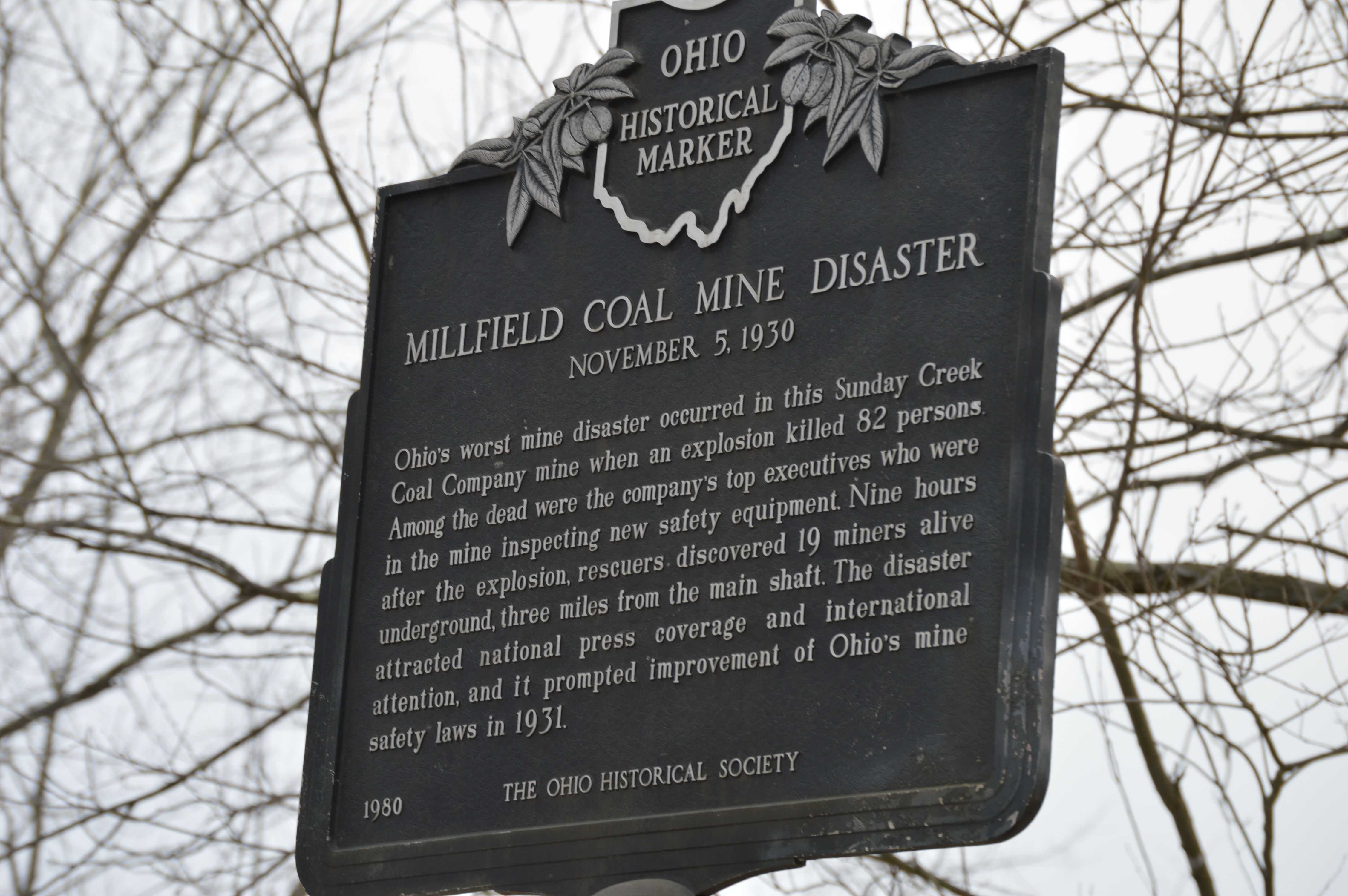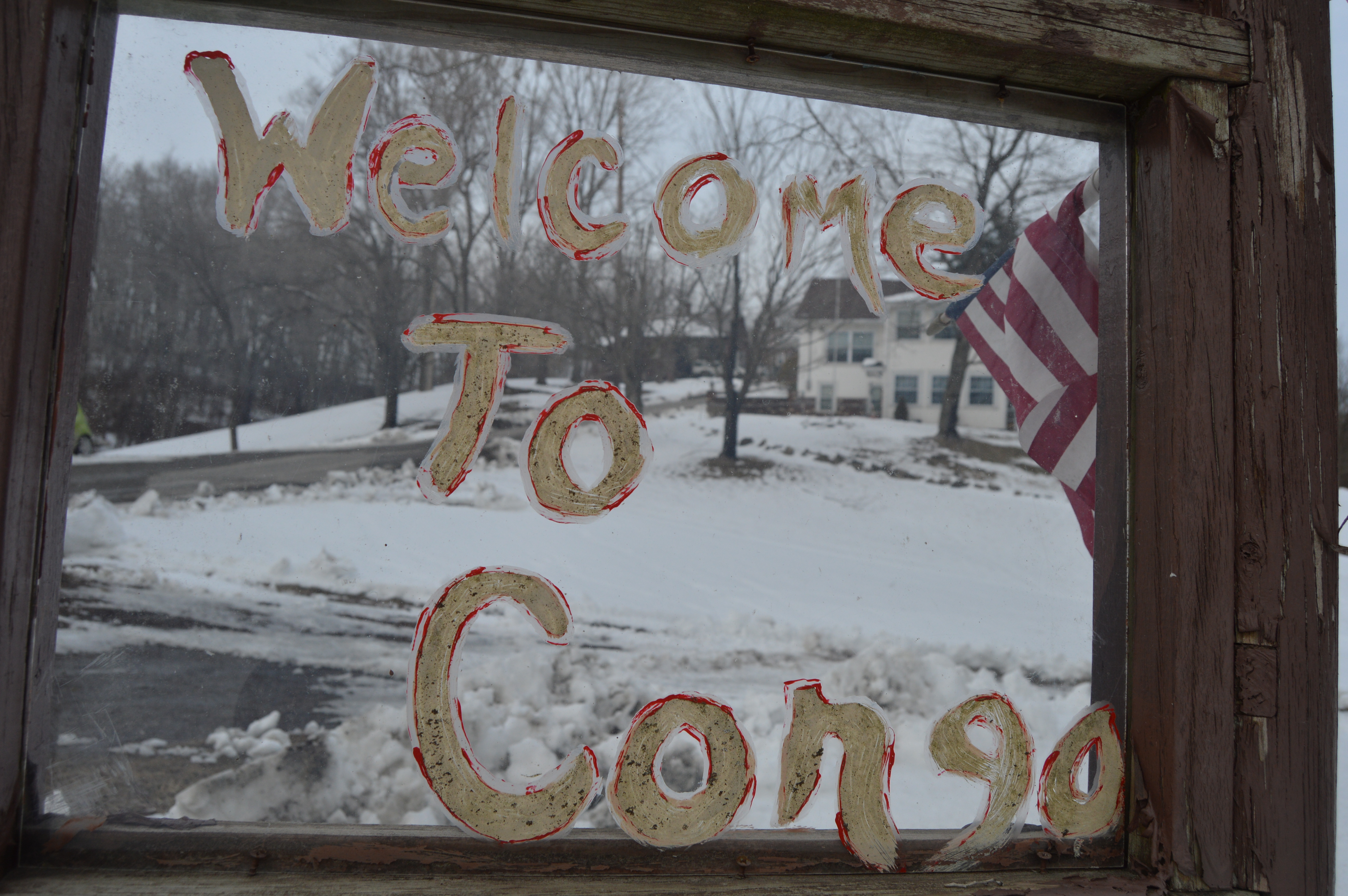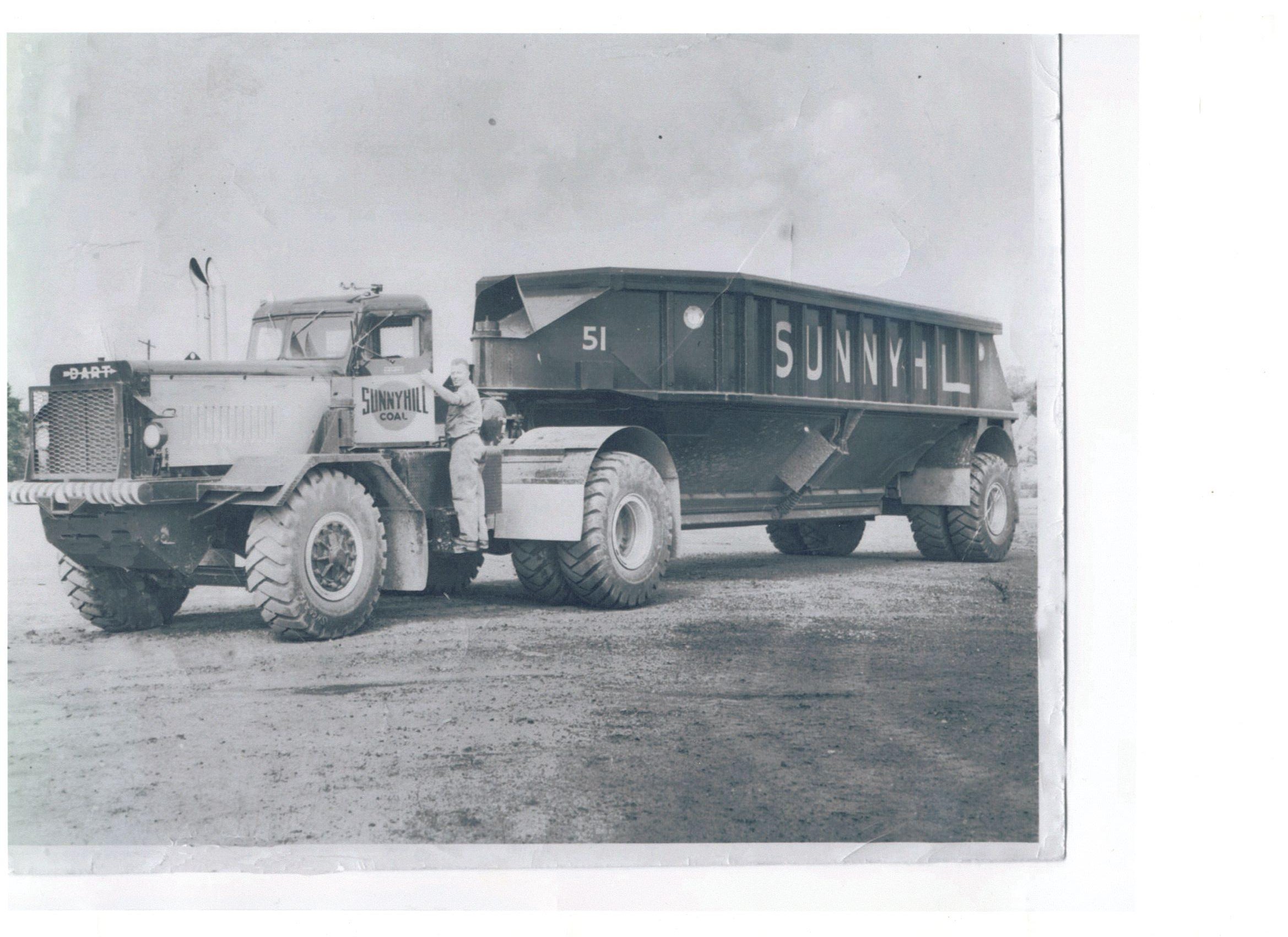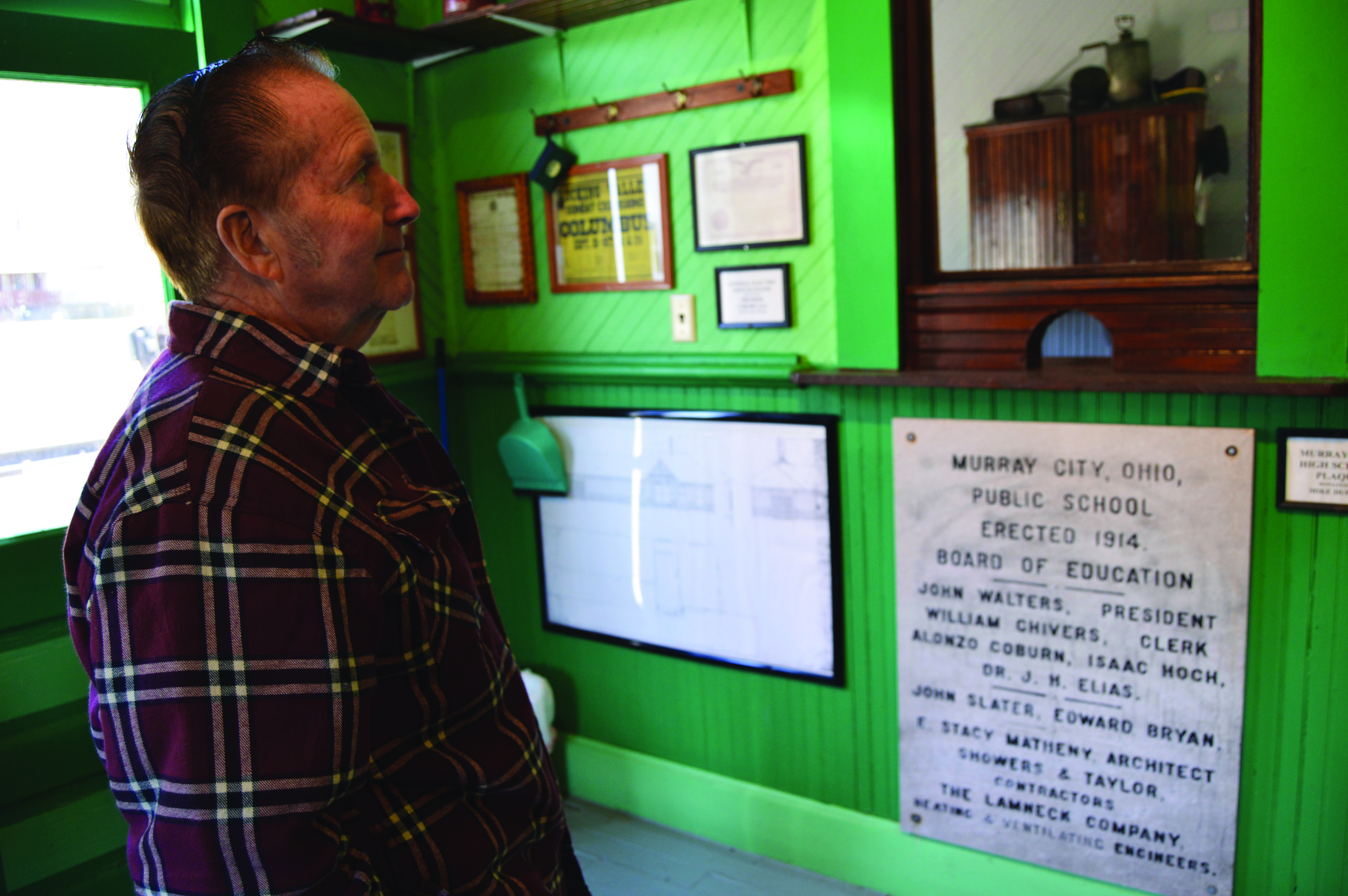
Ghost towns, as lifeless as the rusty rivers that bleed throughout the region, dot the ancient hills of Appalachia.
Tired and empty train tracks function as little more than speed bumps for the few motorists cruising on Perry County’s country roads.
Occasionally, a train will rumble by hollow, decrepit buildings that linger near rail crossings.
Local folklore values the passing train’s cargo at a million dollars.
Today, it can almost be hard to imagine the area during the decades of the coal boom, between the late 1800s to the end of World War II, when immigrants would get off the boat and head straight to Southeast Ohio.
America was the land of opportunity, and coal country was hiring.
In some cases, the only English these new Americans knew referred to a coal town. “Where is Congo?” some would say, referring to the once-quaint company town, says President of the Perry County Historical and Cultural Arts Society John McGaughey.
Congo is now only a fraction of the size it once was, and the era when similar towns thrived survive only as local folk tales and museum exhibits. “When the coal left, so did the people,” McGaughey says.
But not everyone and everything packed up. Personal accounts and physical artifacts remain as relics of human determination and the earth’s exhaustible resources.
The Boom
More than miners rode the coal rush to its zenith. Anyone willing to get his hands a little dirty could make a living.
McGaughey’s father was one of them. When his father lived in Pennsylvania, he worked as a truck driver, hauling coal to steel mills. “Steel mills were just pumping. I mean, 24 hours [a day],” McGaughey says.
When Sunnyhill moved its mining operation to Perry County in the 40s, he worked only briefly as a mechanic. His father became a mechanic, which he worked as until retirement, fixing trucks that could carry up to 100 tons of coal at one time. These trucks would carry coal from the pit to the tipple, where it was loaded onto rail cars. These trucks were too big to travel on public roads. “He became a pretty good mechanic,” McGaughey says.
Jobs in steel, railroads, brickmaking, technical skills, and mining, thrived in the era of coal.
“Had we never had coal, how would we have had steam engines?” McGaughey says.
Companies would come in and establish their own towns. Towns such as Shawnee, Some of these included: Corning, Congo, New Straitsville and even Ohio’s smallest town of 36 people, Rendville. “All these were boom towns,” says Director of Athens County Historical Society Tom O’Grady. “That was when coal was king.”
The companies established the neighborhoods, built the shops and even paid their workers in the company’s own currency, called script.
Script was good to buy essentials at the local company store, but script was not much use outside the coal town. Script could not get a train ticket; it could not buy stock and it only was worth something if the company was still in business. “A lot of these people were trapped in the coal mining cycle,” O’Grady says.
Eventually, coal workers revolted.
During the Hocking Valley Coal Strike of 1884 and 1885—and after some of the original meetings at Robinson Cave in Perry County—legend has it that a group of miners filled a railcar up with coal, soaked it in kerosene and pushed it into a mine shaft.
That night, they lit a fire that burns to this day. The underground fire might symbolize the passion of the union.
The disgruntled miners formed the National Progressive Union of Miners and Mine Laborers, which incorporated with another union to become the United Mine Workers of America, a union that is still active today.
“It was a boom to bust legacy. It brought a lot of people here including my great grandparents from Germany,” local historian and organizer of the annual Little Cities of Black Diamonds Day John Winnenberg says. “It had a huge effect on immigrating to the area.”
The Damages
The disruptive power and relative convenience of coal came at massive and unforeseen costs. Coal companies took a loan from the environment they could not pay back. When the companies left town or went out of business, the residents of Southeast Ohio held a hefty bill, which they are still paying.
The environmental mutilation arises not so much from the mines themselves, but from the resulting acid mine drainage that leaves waterways biologically dead.
Acid mine drainage causes damage to habitats when sulfuric acid gets into the water and alters the pH. “Algae can’t grow, and that’s the base of the food chain,” O’Grady says.
Sunday Creek, which runs through Athens, Morgan and Perry counties, is one of coal mining’s casualties.
The water acquires a reddish tint because of the iron and rust, which is often a sign sulfuric acid has made its way into the water. “I’ve seen it look like tomato soup,” O’Grady says.
The desolation that follows the coal industry is not limited to the environment. Structural unemployment and deflated populations also follow.
After the Peabody Coal Company closed its Sunnyhill mine—the one McGaughey’s father worked for—in 1990, the job market took another hit. “When they left it just went to hell,” McGaughey says. “There was no employment.”
The Bust
Coal first started to decline after World War II when the country needed less steel to support the war effort.
Jobs in the industry didn’t really start to drop off until the Clean Air Act, passed in 1970. The act put increasing regulations on the industry. As part of those regulations, the industry had to start washing coal of its sulfur before using or use low-sulfur coal.
The use of more efficient technology caused some of the coal industry’s layoffs, but “overall, the Clean Air Act was the main problem,” says former District 6 President for the United Mine Workers of America Larry Ward.
Problematic as it may have been to coal jobs, the act helped a hurting ecosystem.
Since the early 1970s, the amount of carbon monoxide in Ohio’s air has decreased 80 percent. Other pollutants have followed suit, Deputy Director of Communication for the Ohio EPA Heidi Griesmer, says in an email.
“It’s easy to see what’s wrong in the whole situation,” Winnenberg says. “But I also understand peoples’ desire to work and have opportunity. It’s a real dilemma.”
Today
Jobs in the coal industry are tough—miners still run the risk of getting black lung—but it can support a family.
Miners today have a middle-class lifestyle, something that was not possible in the early 1900s during the coal boom. Today, a miner gets paid roughly $25-$30 an hour, McGaughey says. Though salaries have increased, workers in the industry still face layoffs.
For example, after the Colorado-based Westmoreland Coal Company purchased Buckingham Coal Company and Oxford Resource Partners for a total of $64 million on Jan. 1, 2015, the parent company laid off dozens of workers.
A few days after Westmoreland picked up the two Perry County coal mines, the company laid off between 30-35 workers. Then a few weeks later, the company confirmed it laid off an additional 56 workers.
Before the layoffs, Buckingham was the largest private employer in Perry County, with around 250 employees, according to 2012 bond documents, the most recent available.
With the exception of a few mines, coal has left the area.
Enter Hydraulic Fracturing?
Like coal, fracking companies extract fossil fuel from an area, offer jobs and are often funded by wealthy investors with little vested interest in the long-term welfare of an area.
The health and environmental concerns neglected in the days of the coal boom now can be asked amid today’s fracking boom. “The lessons we’ve learned from unregulated coal mining are haunting when you think of fracking not being well regulated,” Winnenberg says.
But the lessons learned from unregulated coal might have only limited use when dealing with fracking. The threats to the environment posed by fracking are not the same as those posed by coal. The “potential environmental effects are completely different,” says Chief of Ohio Department of Natural Resources’ Division of Mineral Resources Management Lanny Erdos. “It’s apples and oranges.”
The Utica and Marcellus shale formations lay beneath Southeast Ohio, but the fracking boom has yet to make its way there.
In the meantime, those old coal towns plan to move forward by looking back. Those towns, like Nelsonville and Shawnee, are restoring buildings and training local people to be tour guides to promote the history of the town.
Yes, the goal is tourism. But it is not the kind of tourism industry seeking big-money business executives or reckless gamblers. It’s the kind of tourism that seeks to connect the curious with a piece of American history. “It’s a fascinating story, but it’s not an amusement park story,” Winnenberg says. “The overall legacy is kind of sobering.”
Though tourism has yet to yield large economic benefits for the towns, early signs of success exist. After the town of Shawnee began preserving buildings and beautifying its downtown area, people started visiting town. “We don’t think it’s going to be a silver bullet, but we think it helps us clean up our communities,” Winnenberg says.
A land once fed and abandoned by the boom of the black diamond is now ready to tell its story.
“They’re proud of their heritage up there,” O’Grady said. “It’s a very complex issue. It’s a culture.”



